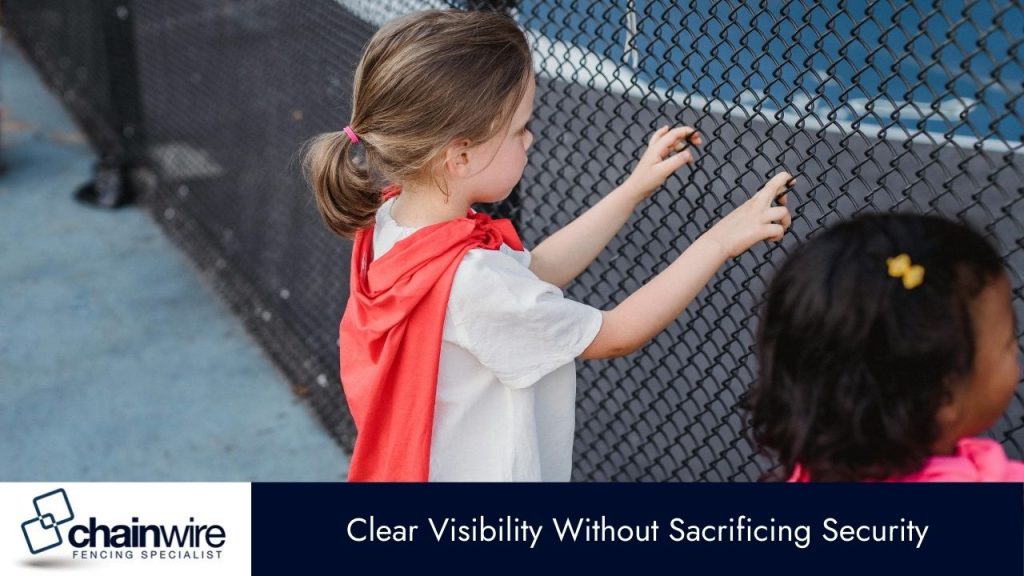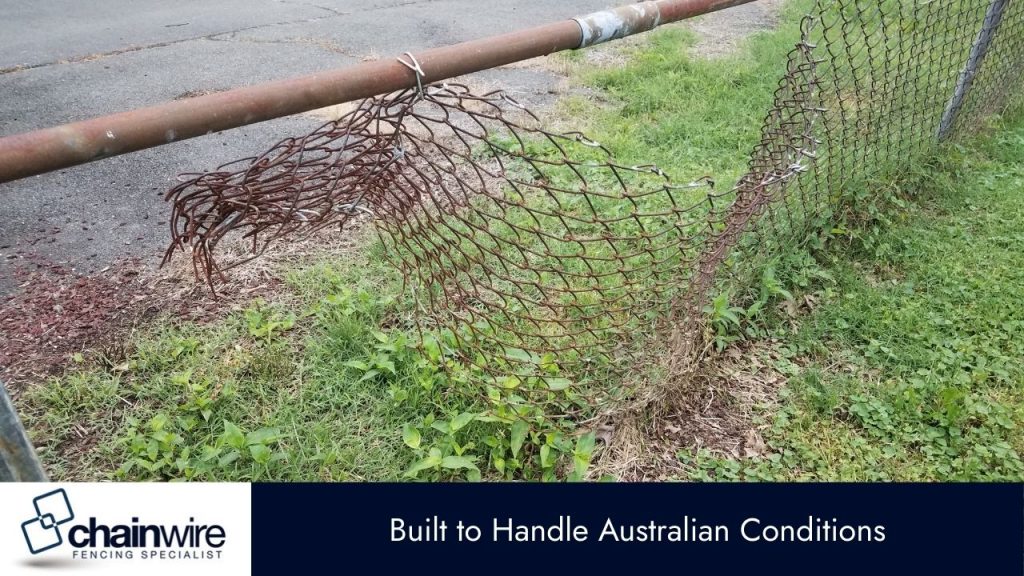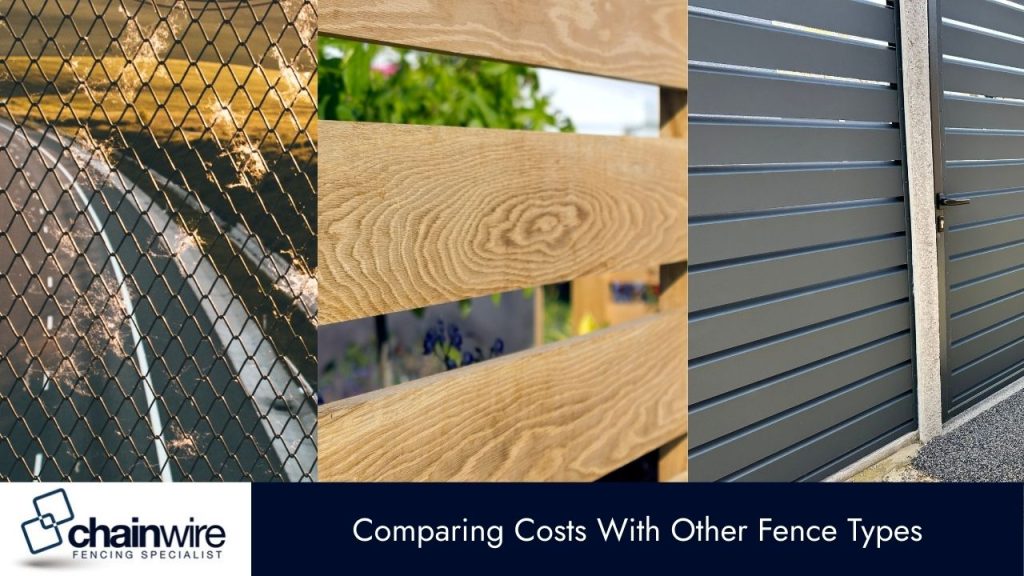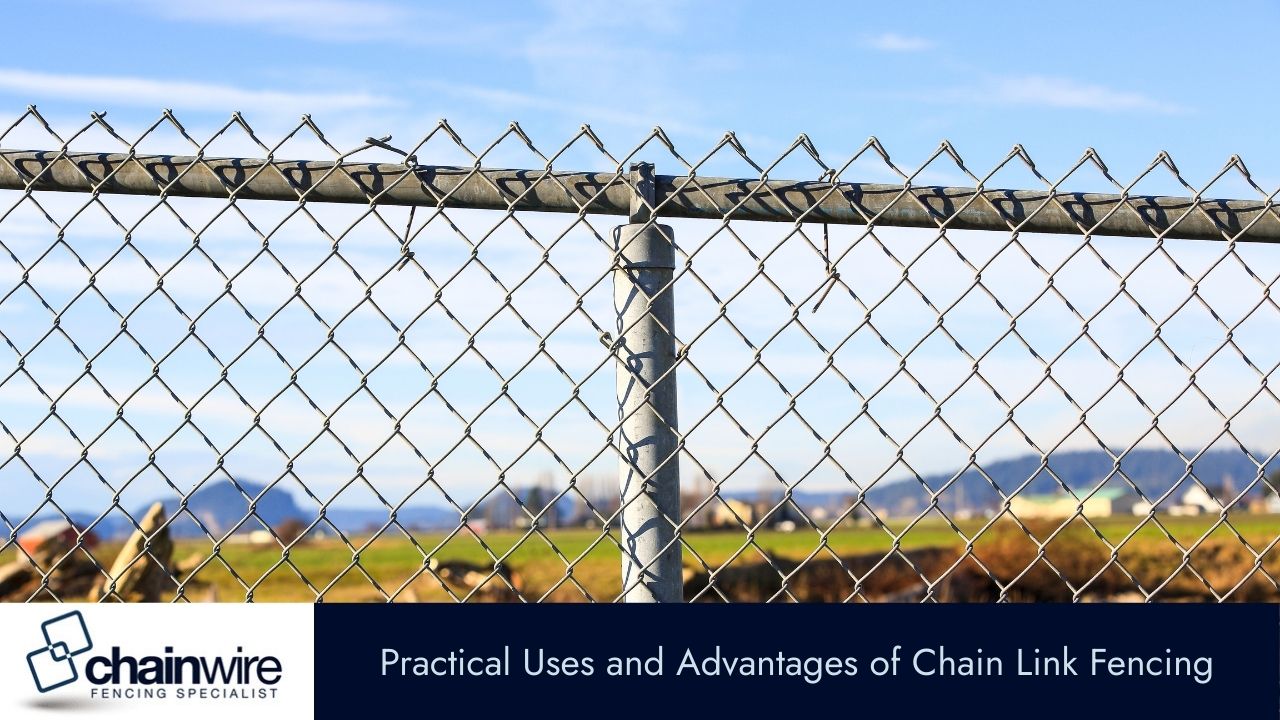Site protection is a basic need for property owners. But many fencing types come with compromises—timber weathers over time, metal panels need coating and repainting, and other styles may block views or cost more to maintain.
Some sites need strength. Others need flexibility. Most need clear visibility, especially where children, pets, or equipment are involved.
Chain link fencing meets these needs without complex materials or high ongoing costs. It’s reliable, low-effort, and widely used across parks, schools, sports courts, and commercial yards. You don’t need to sacrifice function to gain control.
Clear Visibility Without Sacrificing Security
Chain link fencing is known for its diamond mesh pattern, which allows full visibility while marking boundaries. This makes it ideal for monitoring open areas where safety is a concern, like backyards, play zones, or light commercial yards.
Unlike timber or metal panels that block views, chain link provides full sightlines. That helps prevent blind spots, supports incident response, and encourages safer movement within the enclosed space.
It’s also useful in shared spaces where adults need to supervise without physical access, such as school ovals or playgrounds.

Long-Term Durability With Minimal Maintenance
Steel components in chain link fences are galvanised or coated to resist rust and decay. This protects against rain, coastal salt, sun, and pests—without needing frequent repairs.
When damage happens, it’s usually isolated. You can cut out and replace a single section while keeping the rest in place. That reduces cost and avoids tearing down the entire fence.
Cleaning is quick—water and mild detergent are enough. If the coating starts to wear, it can be reapplied without taking the fence apart. You don’t need frequent service schedules or specialist tools.
Built to Handle Australian Conditions
Chain link fencing is often chosen in cyclone or storm-prone areas. Its design allows it to bend and absorb wind pressure without snapping or falling. The post structure keeps the fence upright, while the mesh redistributes force.
This resilience is why it’s called cyclone fencing. From coastal areas to inland sports fields, it remains functional even in rough weather.
If your site experiences strong winds or flooding risk, chain link offers stability and less repair over time.

Adaptable Layouts and Gate Options
Wire thickness, mesh colour, and post height can be adjusted based on your site. These options help the fence fit into different settings without affecting strength.
Gate types also vary. Walkthrough gates suit foot traffic. Sliding gates work well where space is limited. Wide gates allow vehicle access. Each type uses the same core materials for consistency.
This makes chain link fencing suitable across tight spaces, wide entrances, and mixed-use properties like schools or depots.
Clear Boundaries for Schools and Community Areas
Open public spaces need defined areas for safety. Chain link fences divide zones clearly, keeping younger children from crossing into older play areas or off-limit sections.
At sports fields, this separation helps manage groups, reduce conflicts, and keep balls or equipment inside the correct zone.
This type of fencing is often used in fencing for sports areas because it keeps lines of sight open while guiding flow and preventing unauthorised access after hours.
Comparing Costs With Other Fence Types
Chain link fencing often costs less than timber, aluminium, or solid panel options—especially over time. Materials are easier to source, installation is faster, and repairs don’t require full replacement.
There’s also less preparation involved. Most installations need only light groundwork and standard tools. This helps reduce upfront labour time and fees.
For property owners managing budgets, chain link delivers both short- and long-term savings while meeting safety standards.

Where Chain Link Fencing Works Best
This fence type suits locations that need visibility, safety, and clear zones. Common sites include:
- Council parks and play areas
- School ovals and perimeters
- Storage yards and depots
- Animal enclosures and vet clinics
- Pathways and public easements
Each of these locations benefits from strong barriers that don’t block views or require frequent upkeep. Chain link remains one of the most widely used fencing types across these settings in Australia.
Final Advice from Chainwire Fencing
Chain link fencing is a smart choice for safety, visibility, and long-term performance. It suits schools, sports areas, councils, commercial yards, and backyards that need proven reliability.
We assess each site for layout, safety zones, and access needs. From installation to repair, we offer clear advice backed by years of experience.
If you’re planning fencing or reviewing compliance needs, contact Chainwire Fencing Newcastle for a site-based quote and layout planning. Let’s secure the space right from the start.

